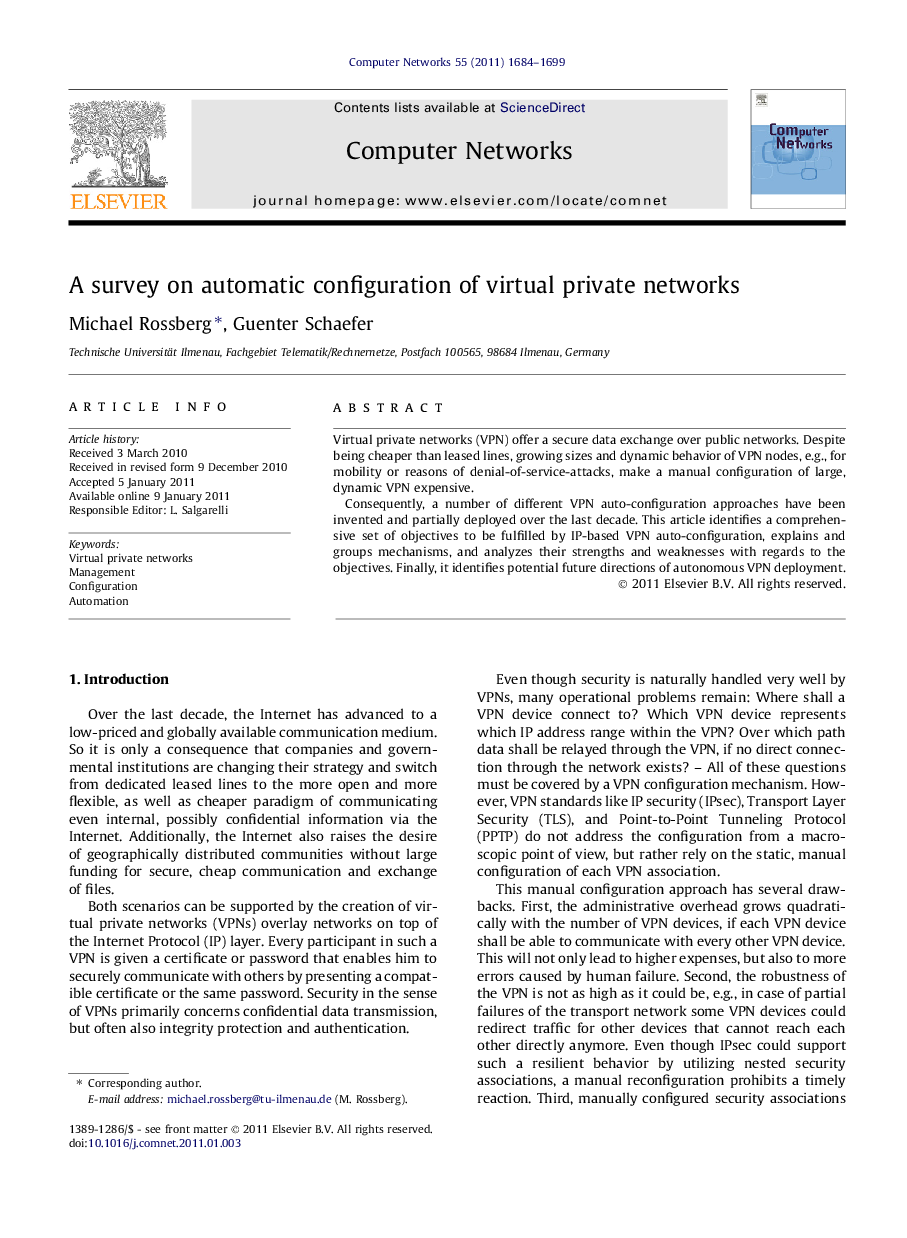| Article ID | Journal | Published Year | Pages | File Type |
|---|---|---|---|---|
| 451230 | Computer Networks | 2011 | 16 Pages |
Abstract
Virtual private networks (VPN) offer a secure data exchange over public networks. Despite being cheaper than leased lines, growing sizes and dynamic behavior of VPN nodes, e.g., for mobility or reasons of denial-of-service-attacks, make a manual configuration of large, dynamic VPN expensive.Consequently, a number of different VPN auto-configuration approaches have been invented and partially deployed over the last decade. This article identifies a comprehensive set of objectives to be fulfilled by IP-based VPN auto-configuration, explains and groups mechanisms, and analyzes their strengths and weaknesses with regards to the objectives. Finally, it identifies potential future directions of autonomous VPN deployment.
Related Topics
Physical Sciences and Engineering
Computer Science
Computer Networks and Communications
Authors
Michael Rossberg, Guenter Schaefer,
